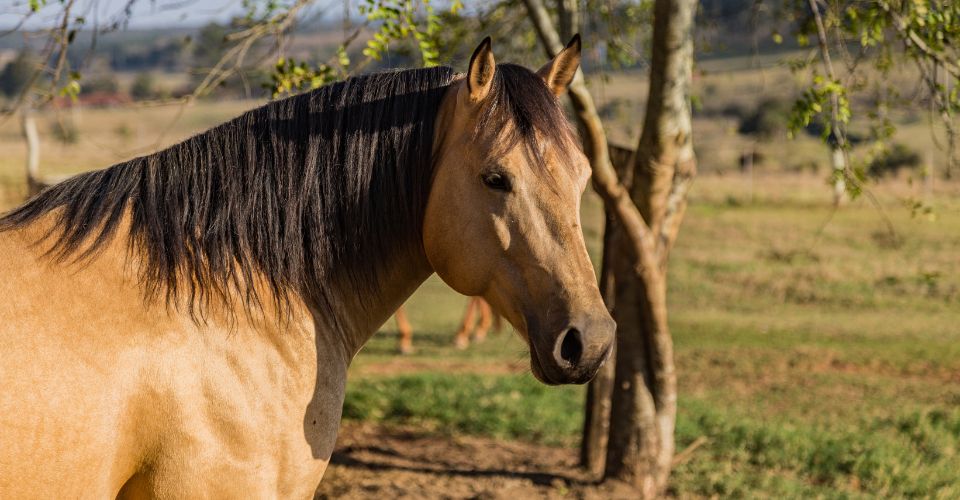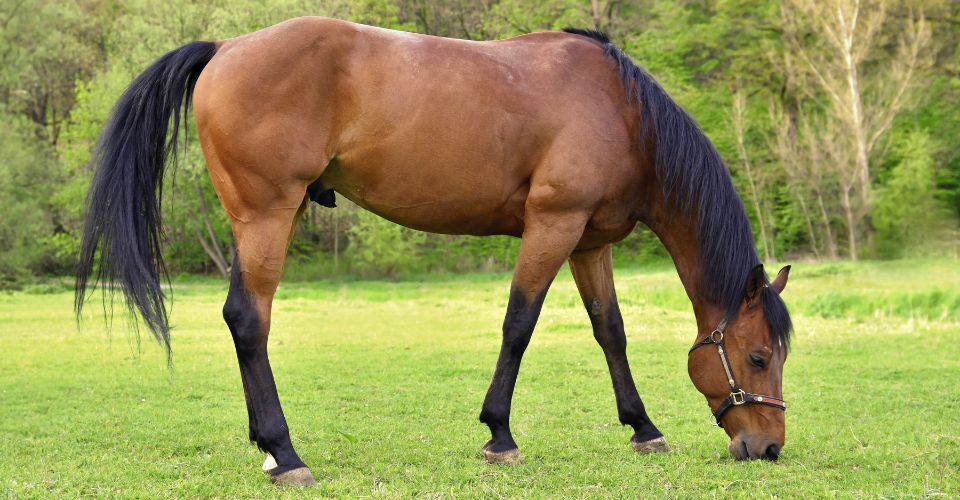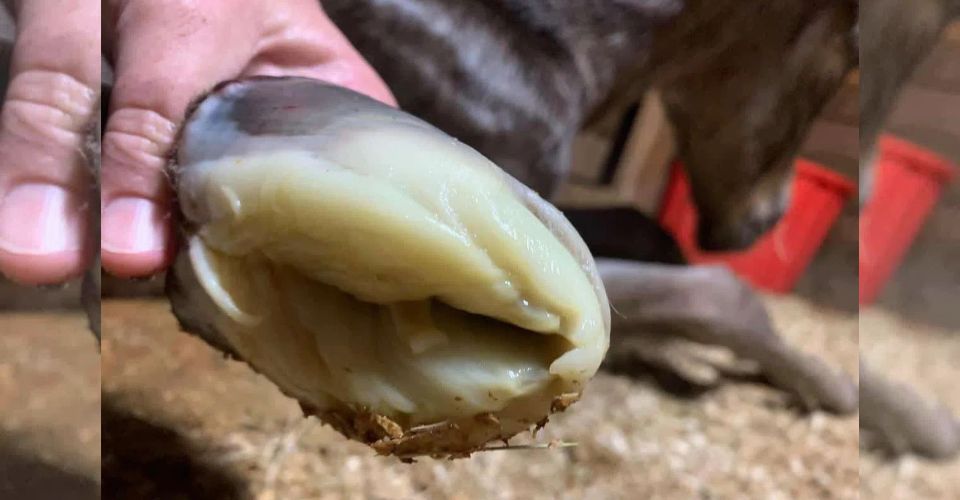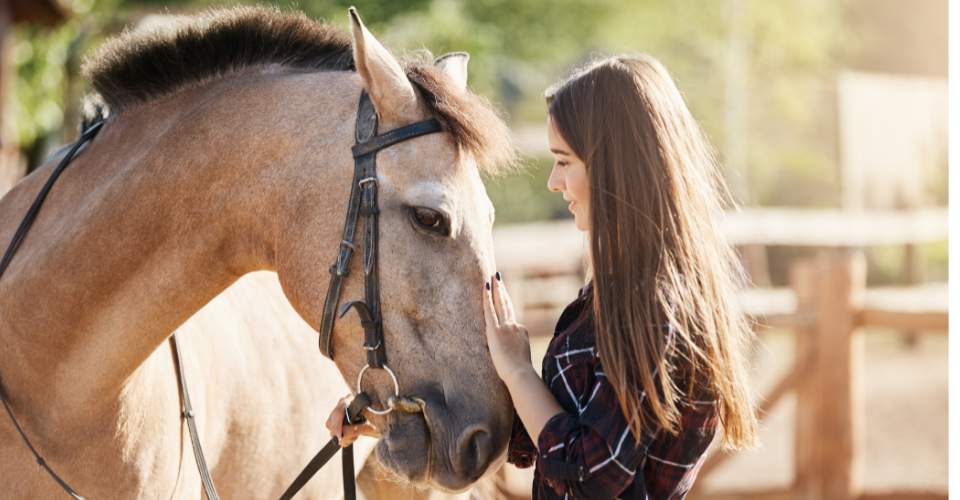Whether you’ve seen them competing or pulling a fancy cart, you must have been awestruck by the beauty and charm of Gypsy Vanner. Glorious feathers, intelligent eyes, a muscular appearance, and a majestic aura; they certainly got everything to make you fall in love with them.
The Gypsy Vanner, also known as the Irish Cob and Gypsy Cob, is one of the most popular breeds of horses. Though they will captivate your attention with their beauty, their temperament is equally lovable.
Here, we will examine some of the characteristics of Gypsy Vanner, from its origin to its lifespan.
History and Origin of Gypsy Vanner
Gypsy Vanners, as we know them today, were carefully bred by Europeans of Romani origin (also called gypsies, and for the same reason, the horse is called Gypsy Vanner).
Being travelers, they had particular requirements for an ideal horse. For instance, the horse they needed should be strong enough to pull their wagons, which were their homes, and be calm enough to be trained easily, safe around their children, and ultimately survive on less food. A Gypsy Vanner provided just that.
Yet, for this to happen, they had to breed the horses carefully for centuries. Today, we don’t have any written history or record, so we don’t know the exact bloodline of Gypsy Vanners. But some of the features give an idea about their origin as their strength and feathers are definitely from Clydesdale and Shires, while the stout and sturdy nature come from Fell Ponies and Dales Ponies.
An American couple ‘discovered’ them while they were on a business trip in England. They were rightly captivated by their beauty but equally shocked at the lack of recognition of this mystical breed; they took things into their hands. From that moment on, the Gypsy Vanner was introduced globally, and since then, it has fascinated the world.
The couple founded the Gypsy Vanner Society to investigate their origin and bloodline. They also gave us the official name we use today. While the name gypsy honors the tribe, vanner tells what the horse actually is. A vanner means a horse suitable to pull caravans. Thus, Gypsy Vanner.
Characteristics of Gypsy Vanner
Have you ever seen a Gypsy Vanner moving with all its hair flowing in the air? They are the kind of horse type that landed straight out of your favorite fairy tale.
The most dominant feature of Gypsy Vanner is their characteristic feathers. They have thick hair around their neck, tail, knees, and hocks.
Their body is usually broad, but the back is shorter, making them suitable for pulling carts. Similarly, their head is in perfect shape, balanced, and pretty proportionate to the whole body.
Gypsy Vanner Sizes
The height of Gypsy Vanner is well-suited to their body. A classic Gypsy Vanner is somewhere 13 to 15 hands tall which equals 52 to 60 inches. However, they can be as short as 12.2 hands and as long as 16 hands.
During their refining moments, they were comparatively taller. That was due to the influence of Clydesdale and Shire. However, the large horses didn’t suit the gypsies’ purpose well. Later on, gypsies introduced Dales Pony—short but sturdy ponies with excellent stamina—to get the short-sized horses.
And now, their size fits perfectly with their overall body structure, although they fall into the category of somewhat shorter breeds. But this doesn’t undermine their abilities in any way. Plus, their size makes it easy to mount on, especially for those who aren’t familiar with horse riding or riders with back pain.
Breeding and Uses of Gypsy Vanner
Irish travelers and Great Britain’s Romani travelers crossbred many horses to have Gypsy Vanner finally. The original purpose of these horses was to pull caravans. Though they still do their duty of pulling caravans or carts, that’s not the only thing this valuable breed can do.
Let’s have a look at some of their modern-time uses:
Great riding horses: Beautiful and eye-captivating, they can allure people into riding them who aren’t even riders and make it a beautiful experience for them. The reason behind this is their docile and easy-going nature.
An ideal Pet: Gypsy Vanners are fascinating for kids as they’re in awe of their personality as soon as they see them. If your kids have seen them in some show or exhibition, they may ask to get one.
Their overall disposition makes them an ideal choice as your pet. They are well-behaved and well-mannered and won’t spook, and they are very much kid-proof pets.
Draft horses: They might not be as big as your typical draft horse, but this fact doesn’t let you question their ability to carry the heavy load. They are frequently named “people-sized” draft horses as they are not as big as Shires are, nor as small as Haflingers.
Thematic services: As therapy horses, they serve people suffering from different traumas or disabilities.
Apart from the benefits mentioned above, you will see them taking part in different shows and exhibitions. Likewise, they also pull carts and take part in dressage and competitions.
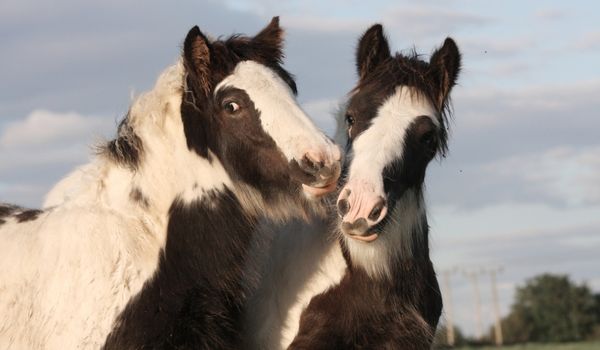
Color Patterns of Gypsy Vanner
Mostly, gypsy Vanner will have a piebald pattern which is a mixed pattern of white and black color. Further, tobiano is the most common version of piebald. There are white patches on top of a darker base, as if someone had poured paint over it to create smooth edges.
And they will have a Blagdon pattern consisting of splashes of white coats on a darker-colored coat.
The Gypsy Horse Association has a complete color chart that is acceptable for Gypsy Vanners. Some of the mentioned colors are grey, smoky black, and chestnut red, among others.
Apart from color, their distinct facial and leg markings also help in easy recognition.
Diet and Nutrition of Gypsy Vanner
The Gypsy Vanner horses have a slow metabolism that allows them to survive on less food. Having this feature helped the gypsies because they were always on the go, and high-quality grain wasn’t always available for their horses.
On the other hand, their slower metabolism can make them gain weight easily. And you may have to restrict them from grazing by a grazing muzzle whenever their activity levels get low.
Due to their slow metabolism, low-sugar and high-fat diets go well with them.
The Health of Gypsy Vanner Horses
Typical Gypsy Vanner is a tough horse, as evident from carrying enormous weight and surviving on low food. But they are no exception to diseases and health issues.
For instance, polysaccharide storage myopathy is a common illness they face. And this is caused by their inability to metabolize sugar and starch. They might develop cramps and muscle tremors, which worsen after robust activity levels.
Marylanders and Sallenders, another disease, is caused by the over-production of keratin protein responsible for their feather’s development. But too much of it causes them to have thick-crusted growth in feathering. They develop scabs and patches on the front and back legs, further aggregating bacterial and fungal infections.
Overall, their life expectancy is not very different from average horses. Their average age is 24 years, and they can live 20 to 25 years.
Gypsy Vanner Horse Grooming
As expected, this breed requires constant grooming and dedicated care. While their feathers are magnificent, they also collect dirt and mud. If they live in a muddy area, they can become easily knotted.
It is not uncommon for them to develop swelling or infection under their feathers. So, apart from making them look good, grooming is needed for their health also.
They would require regular shampoos and conditioners to keep the feathers clean and shiny. Alternatively, you can braid the feathers, which is a common practice and doesn’t look bad either. If you cannot do any of the steps mentioned above, you may also shave them all at once.
1. What are the different names of Gypsy Vanner horses?
The official name is Gypsy Vanner Horse, but it also goes by the name of Gypsy Horse or Gypsy Cob. Sometimes, they are referred to as Irish Cob or Irish Tinker.
2. Are Gypsy Vanner gaited horses?
They have such an outstanding and attention-grabbing gait that you may wonder if they are gaited horses. No, they aren’t truly gaited horses, but their movement with their featured legs becomes effortlessly graceful and impresses the onlookers.
3. Are Gypsy Vanner coldblooded?
They have everything in them, making them a part of the cold-blooded group, as drafted bodies and relaxed and calm behavior. Though they got some hot-blood influence from Dale Ponies, other than that, they are considered more of a cold-blooded family. The only hot blood trait in them is their speed or athletic ability.
4. What is the average price for Gypsy Vanner horses?
Since they are rare and in high demand, they can be expensive. In general, the cost ranges from $10,000 to $30,000, and if the horse is highly trained, the price could rise to $50,000. Buying them can be expensive, and they require special grooming and diets as well.
Conclusion
Overall, Gypsy Vanners are a great breed of horse that proves their worth. Whether you are looking to get one as a family pet or have just begun riding horses, they are incredible. Due to being highly trainable, energetic, and compassionate, they’re excellent for a beginner rider or family companion.
Other than pulling carts and caravans, they’re enchanting people with their unique personalities and delightful demeanor. But remember to take care of them on a regular basis as their features very often cause them to suffer as well.


